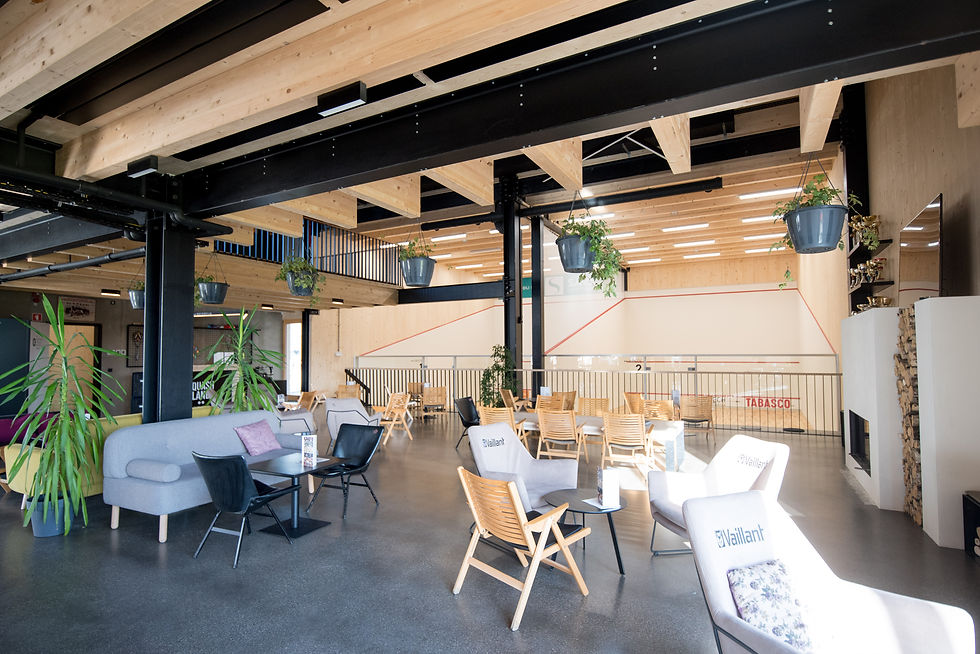
Goran Milicevic is not just another name in the squash community; he is a pioneering entrepreneur who has ingeniously combined sporting passion with commercial savvy. Founding his first venture, Squashland One, in Slovenia's capital, Ljubljana, back in 1992, Milicevic initially sought to create a traditional squash facility. Yet, despite its initial flair and promise, the club had to shutter its doors in 2006 due to leasing issues. Unperturbed, Milicevic took this setback as an opportunity for growth and laid the groundwork for a novel, sustainable approach to squash facilities. After 12 arduous years of planning, Squashland Slovenia was inaugurated in the fall of 2018.
From Lessons to Legacy: The Evolution from Squashland One to Squashland Slovenia
Goran Milicevic's trajectory in the squash industry serves as an enlightening case study for anyone interested in the business dynamics of the sport. With a career spanning decades, Milicevic is a veteran whose understanding of the challenges and opportunities in this sector is profound. His first venture, Squashland One, ran into obstacles primarily due to its leasing model. When the long-term rental agreement was abruptly cancelled in 2006, the club had to close, leaving Milicevic without a business but with invaluable lessons.
His second venture, Squashland Slovenia, is the crystallization of these lessons into a best-practice model for squash facilities. This facility, unlike its predecessor, is entirely owned, thereby eliminating the risks associated with leasing. Milicevic meticulously crafted a financing strategy involving both personal funds and stable external financing to ensure long-term viability.
Squashland Slovenia is also groundbreaking in its construction, being the world's first squash center built using eco-friendly CLT (Cross-Laminated Timber) panels. With a focus on sustainability, the facility incorporates various cutting-edge technologies such as solar power plants, waterless urinals, and 100% LED lighting.
Moreover, the design of the facility is ingeniously adaptable. With space constraints being a significant challenge, the squash courts are spread across three different floors. Each of these courts is multifunctional, designed to accommodate different sports programs during less busy hours.
A Holistic Experience: Beyond the Squash Courts
The facility goes beyond squash by offering comprehensive amenities for its members. The basement houses spacious changing rooms, a sauna, and a massage room, while the second floor accommodates a well-equipped gym. The ground floor, designed with biophilic elements, includes a club space replete with a fireplace and is capable of hosting events for up to 200 people.
In the pipeline are plans for an adjacent "cycling hotel" and an in-house kitchen that would utilize vegetables grown on the facility's green rooftop garden.
Takeaways and Recommendations
For those inspired to embark on a similar venture, Milicevic's journey offers several key insights:
- Ownership guarantees long-term stability and is crucial for long-term success.
- A blend of personal and external financing ensures a strong financial backbone.
- Operational costs can be minimized while improving the user experience through smart investments in sustainable technologies.
- Multifunctionality in court design can offer additional revenue streams and higher engagement rates.
- Sustainability isn't just a buzzword; it's a prudent long-term investment.
- The social component of the facility is vital for the success.
Conclusion
Squashland Slovenia is not merely a squash facility; it is a visionary project that seamlessly integrates commercial acumen, sporting enthusiasm, and sustainable innovation. It stands as an exemplary model for anyone looking to establish a squash facility that is not just financially stable, but also socially engaging and environmentally responsible. As Goran Milicevic aptly points out, each environment has its unique challenges, but the fundamental principles for establishing a successful venture remain the same: a robust business model adapted to local needs, combined with an abiding love for the sport, will invariably lead to success and contribute meaningfully to the global growth of squash.
For more pictures and drawings go to: Squashclub Slovenia | Squash Facilities

Comentarios